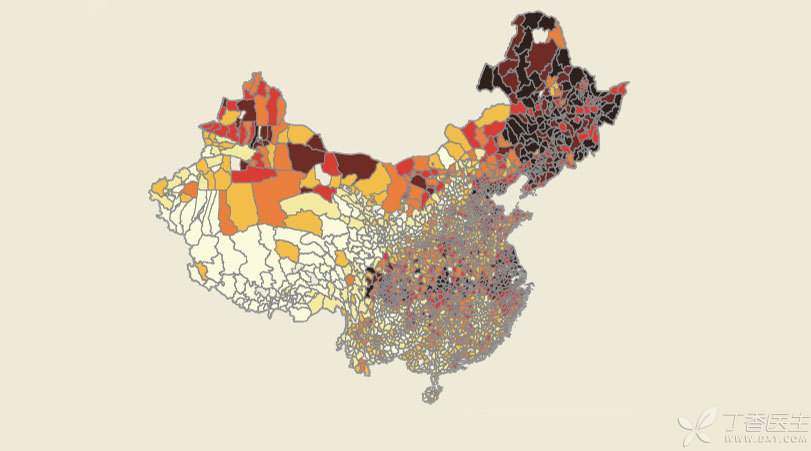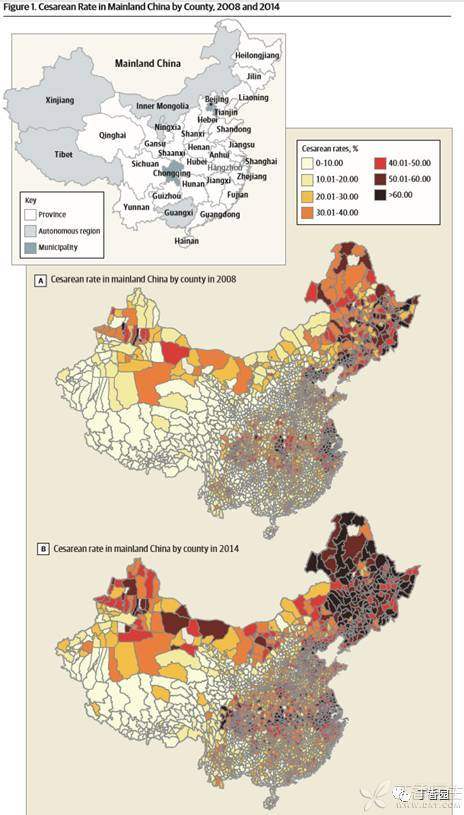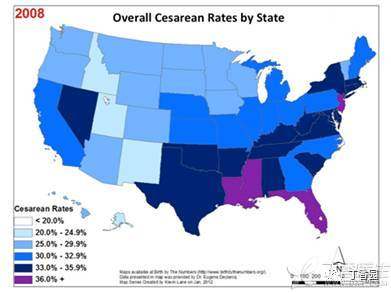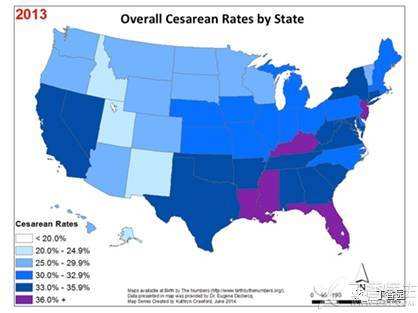
In 2010, many authoritative media in China rushed to report a group of data, saying that according to WHO statistics, China’s cesarean section rate is as high as 46%, while the international cesarean section [warning line] is 15%, China is more than 3 times, ranking first in the world. Since then, the discussion on the domestic cesarean section rate has not stopped.
Why is the cesarean section rate so high in China? What are the factors with Chinese characteristics that have contributed to the cesarean section rate with Chinese characteristics?
Five years ago, I also discussed this issue with friends who are concerned about this content. Behind the [excessively high] cesarean section rate in what is the Chinese reason.
However, a report on the cesarean section rate in China published in JAMA, an authoritative international medical journal, at the beginning of this year gave a resounding answer to these arguments: first ask if it is, then ask why!
Is the paper about what?
This paper is a research paper by Liu Jianmeng’s research group of the School of Public Health of Peking University. It uses statistics from the National Annual Report Office of Maternal and Child Health and covers every county-level administrative division unit in 31 provinces in mainland China.
One of the highlights of this article is that it uses all the data, instead of the small sample data of 21 hospitals in China as WHO did before. Therefore, the data reported in this article are more authoritative and convincing.
According to the data reported in this article:
From 2008 to 2014, there were 100,873,051 live births in Mainland China, of which 32,947,229 (32.7%) were cesarean sections.
In 2008, there were 13,160,634 live births, of which 3,788,029 (28.8%) were cesarean sections.
In 2014, there were 15,123,276 live births, of which 5,280,124 (34.9%) were cesarean sections.

The darker the color above, the higher the cesarean section rate. From the data, China’s cesarean section rate is indeed increasing year by year. However, the weight gain rate is not fast, and the growth rate abroad during the same period is not too different. The actual national cesarean section rate is not as high as previously reported.
For example, the article mentioned that the cesarean section rate in the United States was 32.2% in 2014, while Brazil, which is also a middle-income country, had a cesarean section rate of 56%.


It can be seen that China’s cesarean section rate is not the legendary [Chinese characteristics], let alone the first in the world.
The situation in some areas is worrying.
Compared with the world level, the average value of cesarean section rate in China is not abnormal [excessively high], but the biggest characteristic is that the regional difference of cesarean section rate in China is very large.
The data from some areas have reached more extreme situations.
People often cite examples of an annual salary of 1 million and an annual salary of 10,000. On average, everyone earns 500,000 a year. By the same token, due to the uneven development in various parts of the country and the huge regional differences, the regional differences in cesarean section rates are also very large.
For example, in 2014, Tibet had the lowest cesarean section rate of only 4%, while Jilin had the highest cesarean section rate of 62.5%. Even in neighboring provinces, such as Shaanxi and Gansu, which are located in the northwest region, the cesarean section rates are 30.3% and 16.2% respectively. However, the cesarean section rates in Hunan and Hubei, which are [two lakes], are 33.9% and 49.5% respectively.
Not only does the cesarean section rate vary greatly, but the change trend of the cesarean section rate also varies greatly-some areas are declining year by year, while others are increasing rapidly. For example, the cesarean section rate in Anhui Province increased from 28.6% in 2008 to 40.8% in 2014. However, Zhejiang Province, which is close to it, dropped from 50.6% in 2008 to 44.0% in 2014.
With such huge regional differences, when we say [China’s cesarean section rate], it may not make much sense to say a general domestic average, or the change trend of cesarean section rate.
Is there any reason for what’s high cesarean section rate?
Through some previous clinical observations, I tried to speculate on the causes of high cesarean section, which may have problems from parturients, doctors and some economic benefits.
(1) Cognitive reasons for parturients
We often encounter some parturients who are afraid of pain. According to hearsay, they think that cesarean section will not hurt, give birth quickly, and suffer less. Others have to cut them out before September 1 in order to go to school one year earlier, or do not have children on Qingming Festival or July 15. What’s more, some mothers want to choose a good day to give birth to their babies, but also choose a good time to give birth, which cannot be controlled by natural childbirth.
These misconceptions have increased the incidence of cesarean section performed by doctors. This part of cesarean section is clinically called cesarean section with non-medical indications.
For a long time, the proportion of this kind of cesarean section is very high in many parts of the country, which is also the focus of controlling the cesarean section rate.
Of course, this kind of cesarean section is not unique to China, and it is not easy to control it. For example, a BMJ report said that in 2008, 4.9% of pregnant women in Britain who had no risk factors for cesarean section ended up having cesarean section, of which 71% had elective cesarean section except for a small number of emergencies during childbirth.
(2) Reasons for doctors
The relationship between doctors and patients in China is tense and there is a lack of trust between doctors and patients. In order to protect themselves, doctors choose defensive medical treatment, so they will relax the indications for cesarean section.
At the same time, the professional level of domestic doctors is quite different. For example, due to the lack of labor management ability, or the lack of pregnancy management, vaginal delivery could have been carried out, and eventually cesarean section had to be carried out, thus increasing the cesarean section rate.
All of the above, different levels of obstetric professional knowledge, resulting in differences in cesarean section rates.
(3) Reasons for economic benefits
It is also a child, cesarean section takes less time and the operation cost is high. However, vaginal delivery requires more time to manage the labor process and the medical charges are still low, so doctors will prefer cesarean section.
Of course, for this reason, some places have already begun to carry out reforms in medical charges to narrow the difference in charges between vaginal delivery and cesarean section, reflecting the value of doctors’ medical management in vaginal delivery, thus reducing unnecessary cesarean section operations.
What does the cesarean section rate represent?
The control of cesarean section rate is more to improve the health status of pregnant and lying-in women and reduce perinatal morbidity and mortality. Therefore, it is not that the lower the cesarean section rate, the better.
Although previous reports said that WHO’s [warning line] was 15%, this figure was set in 1985 and has aroused widespread doubts.
In 2010, WHO also released new data. After counting its member countries, they found that the 20% cesarean section rate may correspond to the lowest maternal mortality rate and perinatal mortality rate, that is, the 20% cesarean section rate may bring better outcomes.
In this article by Mr. Liu Jianmeng, this point is also emphasized. We should not demand an optimal cesarean section rate, which is actually difficult to determine. We should look for a solution that is most beneficial to women and children according to local conditions.
Back home, In many provinces, the rate of cesarean section exceeds 50%, This is indeed necessary to control and reduce. However, For example, the cesarean section rate in Hainan Province has increased from 10.0% to 16.4%, which may be an improvement, because it may more reflect the popularization of medical facilities and medical technologies, indicating that more pregnant and lying-in women can enjoy the care of hospital delivery and, if necessary, the relevant medical treatment for cesarean section.
After all, cesarean section is not a scourge in what. If necessary, it can also save lives.
Therefore, from the doctor’s point of view, it may not be meaningful to simply pursue a cesarean section rate. What is more important is to evaluate the situation of each pregnant and lying-in woman from the perspective of the patient and provide the most appropriate delivery method according to the actual situation.
Reduce unnecessary cesarean section as much as possible and reduce the cesarean section rate with non-medical indications; However, when surgery is really needed, one should not be timid because of [cesarean section rate].
